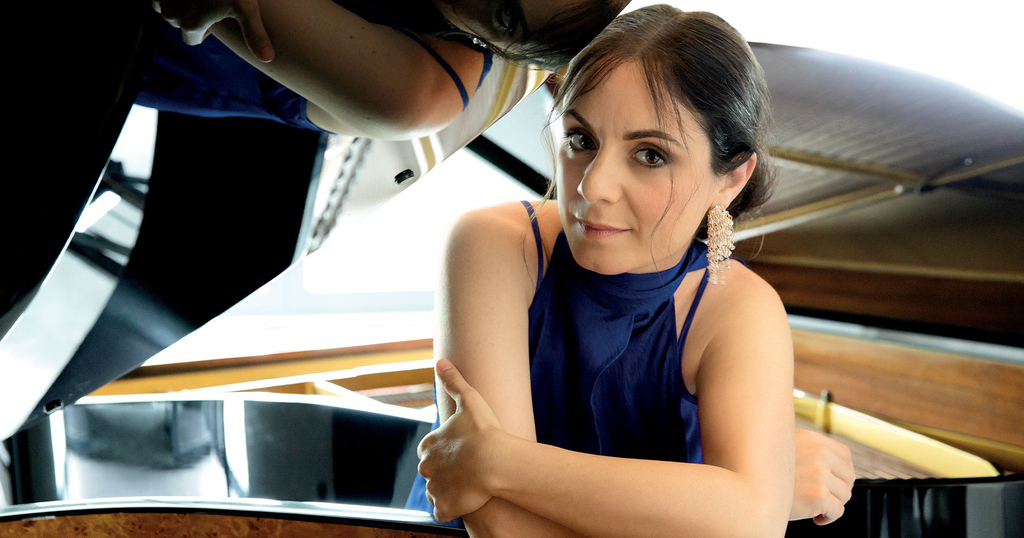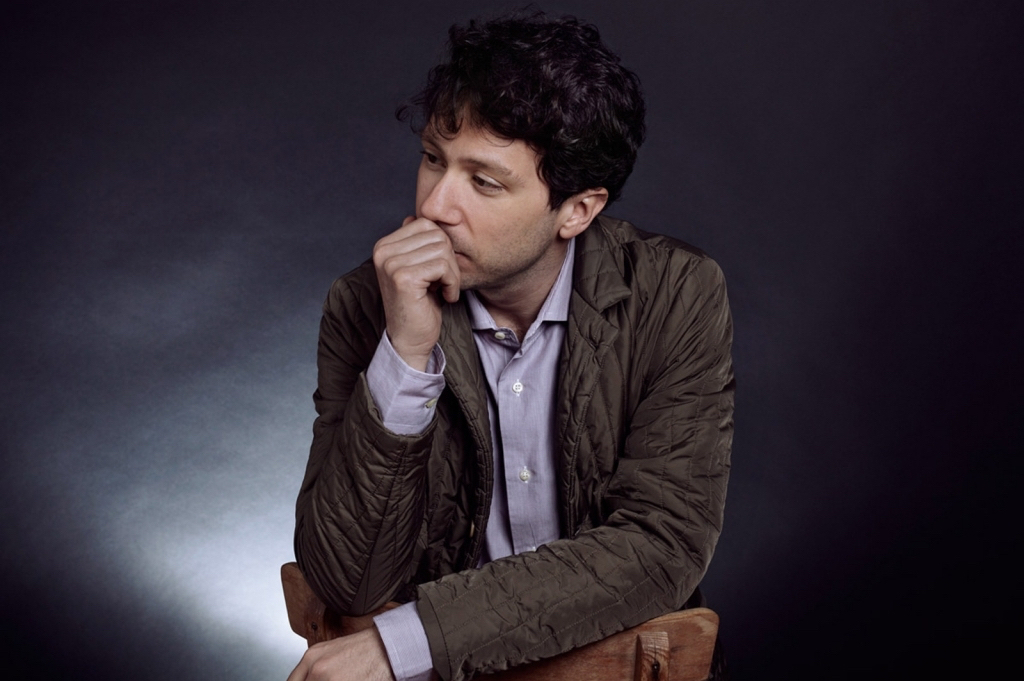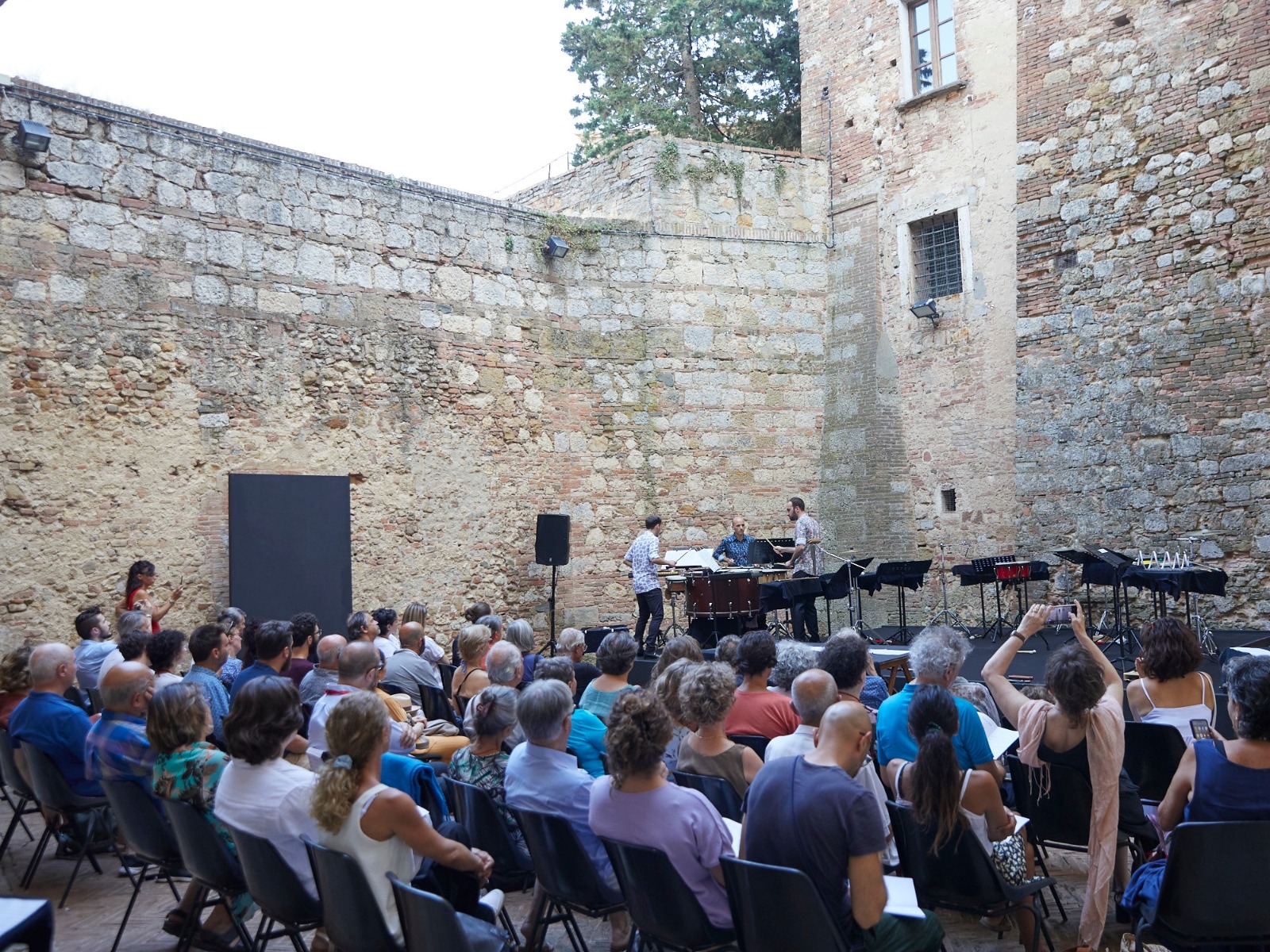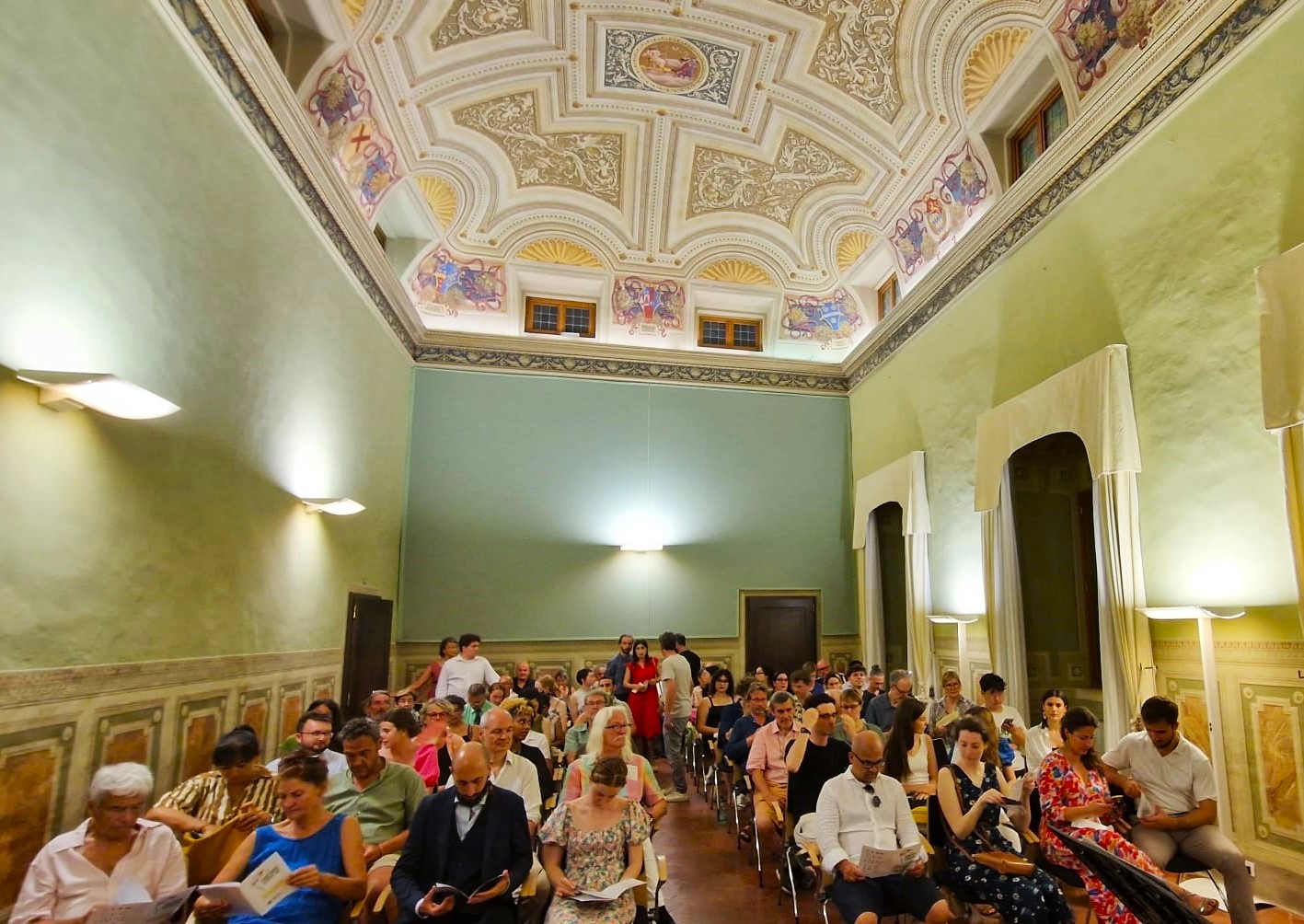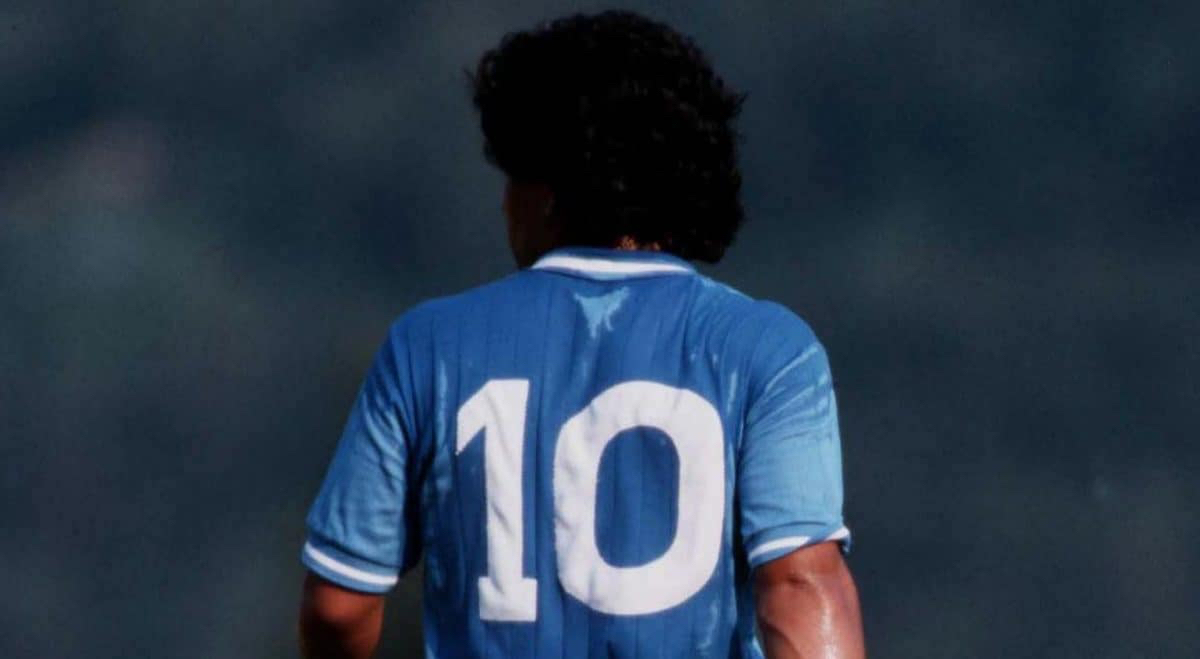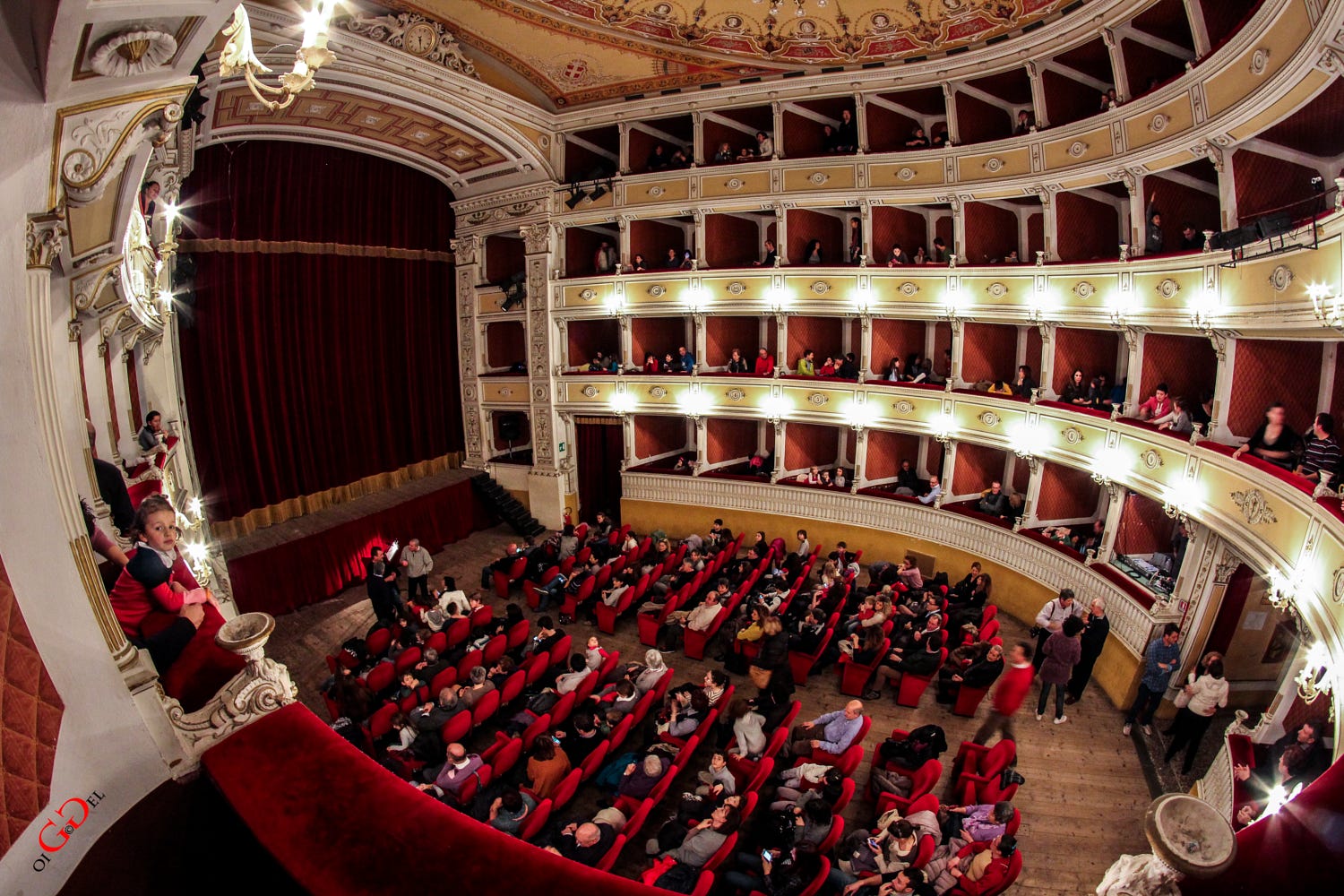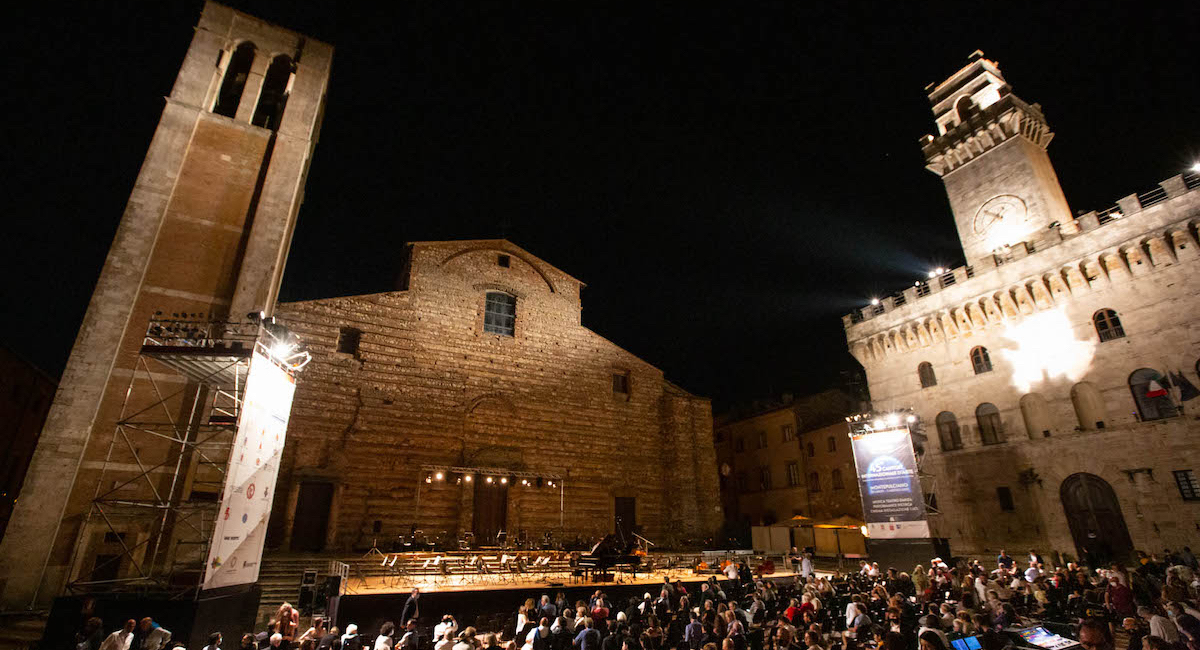IL CANTICO DI FRATE SOLE

Johannes Geffert
clavicembalo
Ulrike Friedrich
flauto
Emma Bali
voce recitante
Trequanda - Chiesa dei Santi Pietro e Andrea
VENERDÌ 26 LUGLIO
Ore 21:30
INGRESSO € 1
ACQUISTA IL BIGLIETTO
Per tutti i biglietti acquistati in prevendita, la maggiorazione prevista è di 1,50 euro.
Georg Friedrich Händel
(1685-1759)
Sonata in sol maggiore op. 1 n. 5 HWV 363b
Adagio
Allegro
Andante
Bourrèe
Eduard Paulus
(1937-1907)
Assisi, da Bilder aus Italien
Anna Bon
(1738 -1767)
Sonata in sol maggiore op. 1 n. 6
Adagio
Allegro
Minuetto con Variazione
Francesco di Assisi
(1181 - 1226)
Il cantico delle creature
Giovanni Benedetto Platti
(1697-1763)
dalla Sonata in sol maggiore op. 3 n. 6
Siciliana (Adagio)
Allegro
Ingeborg Bachmann
(1926 - 1973)
An die Sonne
Giovanni Benedetto Platti
dalla Sonata in sol maggiore op. 3 n. 6
Non tanto Adagio ma cantabile
Arietta con variazioni non tanto Allegro
Di questa costa, là dov’ ella frange
più sua rattezza, nacque al mondo un sole,
come fa questo talvolta di Gange.
Però chi d’esso loco fa parole,
non dica Ascesi, ché direbbe corto,
ma Orïente, se proprio dir vuole.
(Divina Commedia, Paradiso Canto XI, 50-54)
Così Dante parla di Assisi nell’XI canto della terza Cantica della sua Commedia, il Paradiso. Assisi viene paragonata all’«Orïente», il punto dove nasce il sole. Quel sole che ha rappresentato San Francesco per la cristianità e l’umanità in generale.
Ed è proprio sul Sole, celebrato dalle parole del Poverello di Assisi nel suo celebre Cantico e da quelle di altri due poeti, che si concentra il concerto di oggi. Parole e Musica che si uniscono nel clavicembalo di Johannes Geffert, il flauto di Ulrike Friedrich e la voce di Emma Bali.
Al centro del concerto proprio il Cantico di Frate Sole di San Francesco, conosciuto anche come Cantico delle Creature, di cui quest’anno ricorre l’ottocentesimo anniversario della composizione. È considerata il più antico componimento poetico in lingua italiana di cui si conosca l’autore. La sua stesura si ritiene appunto risalga al 1224, due anni prima della morte del santo di Assisi, avvenuta il 4 ottobre del 1226. Un’ode di ringraziamento a Dio, che Francesco definisce Altissimo, Onnipotente e Buono, e alle sue creature, primo fra tutti «Messer lo frate sole», e poi Sorella Luna, le Stelle, l’Aria, il Cielo, l’Acqua e il Fuoco, Madre Terra e perfino la Morte, che Francesco chiama sorella.
Emma Bali darà poi voce alle parole che Eduard Paulus, storico dell’arte, archeologo e poeta tedesco, dedica alla città di Assisi, visitata durante un suo viaggio in Italia e contenute nella sua raccolta Da Bilder aus Italie, Immagini dall’Italia. Paulus racconta di una visita ad Assisi. Dall’alto osserva la città, il fiume che scorre alle pendici del monte Subasio, gli ulivi che coprono come un manto le sue pendici, il monastero che lo domina, la sua cattedrale con le due basiliche, l’Inferiore che conserva le ossa del Santo, e la Superiore con i meravigliosi affreschi di Giotto. «In Assisi muß man mit der Sonne aufstehen», conclude il poeta, "Ad Assisi bisogna svegliarsi col sole", quel sole che si alza dall’immenso mare di nebbia che ricopre la valle alle prime luci dell’alba, quel sole che ha la forza di dissipare quella stessa nebbia, come in una battaglia, dice Paulus, battaglia che vede il Sole vincere ogni mattina sull’oscurità delle tenebre.
Un’altra ode al Sole e alle meraviglie che porta e illumina nella vita esce dalle parole di Ingeborg Bachmann, poetessa e giornalista austriaca che negli anni ’50 iniziò una collaborazione con il compositore tedesco Hans Werner Henze, fondatore del Cantiere Internazionale d’Arte di Montepulciano. Emma Bali dà voce a An die Sonne, Al Sole.
A fare da cornice alla parole avremo la musica di Georg Friedrich Händel con la sua Sonata in Sol maggiore op. 1 n. 5 HWV 363b, composta tra il 1711 e il 1716 originariamente come sonata per oboe in fa maggiore e successivamente pubblicata come sonata il sol maggiore per flauto traversiere, antenato del moderno flauto traverso, la Sonata in Sol Maggiore op. 1 n. 6 di Anna Bon, compositrice e cantante bolognese del XVIII secolo e la Sonata in sol maggiore op. 3 n. 6 di Giovanni Benedetto Platti, compositore di scuola veneziana. (Myriam Bizzarri)
From this slope, where it most breaks
its steepness, rose upon the world a Sun,
51 as does this one sometimes from the Ganges.
Wherefore who of this place talks
let him not say Ascesi, which were to speak short,
54 but Orient, if he properly would speak.
(The Divine Comedy, Paradiso XI, 50-54)
Thus Dante speaks of Assisi in the XI canto of the third Cantica of his Comedy, Il Paradiso. Assisi is compared to the «Orïent», the point where the sun is born. That sun that represented Saint Francis for Christianity and for humanity in general.
And it is precisely on the Sun, celebrated by the words of the Poverello di Assisi (Francis) in his famous Canticle and by those of two other poets, that today's concert focuses. Words and Music that meet in the harpsichord of Johannes Geffert, in the flute of Ulrico Friedrich and in the voice of Emma Bali.
At the center of the concert is the Canticle of Brother Sun (St. Francis), also known as the Canticle of the Creatures, which this year marks the eight hundredth anniversary of its composition. It is considered the oldest poetic composition in Italian whose author is known. It is believed that its writing dates back to 1224, two years before the death of the saint of Assisi, which occurred on 4 October 1226. A hymn of thanks to God, whom Francis defines as Most High, Almighty and Good, and to his creatures, first of all «Brother Sun», and then Sister Moon, the Stars, Air, Sky, Water and Fire, Mother Earth and even Death, which Francesco calls sister.
Emma Bali will then give voice to the words that Eduard Paulus, German art historian, archaeologist and poet, dedicates to the city of Assisi, visited during his trip to Italy and contained in his collection From Bilder aus Italie, Images from Italy. Paulus tells of a visit to Assisi. From above he observes the city, the river that flows on the slopes of Mount Subasio, the olive trees that cover its slopes like a cloak, the monastery that dominates it, its cathedral with its two basilicas, the Lower Church which preserves the bones of the saint, and the Superior with Giotto's wonderful frescoes. «In Assisi muß man mit der Sonne aufstehen», concludes the poet - In Assisi you have to wake up with the sun, that sun that rises from the immense sea of fog that covers the valley at the first light of dawn, that sun that has the strength to dispel that same fog, as in a battle, says Paulus, battle who sees the Sun win every morning over the obscurity of darkness.
Another ode to the Sun, the wonders it brings and how it illuminates life, comes from the words of Ingeborg Bachmann, an Austrian poet and journalist who in the 1950s began a collaboration with the German composer Hans Warner Henze, founder of the Cantiere Internazionale d'Arte of Montepulciano. Emma Bali gives voice to An die Sonne, To the Sun.
To frame the words we will have the music of Georg Friedrich Händel with his Sonata in G major op. 1 n.5 HWV 363b, composed between 1711 and 1716 originally as an oboe sonata in F major and subsequently published as a sonata in G major for flute traversiere, ancestor of the modern flute, the Sonata in G Major op. 1 n.6 by Anna Bon, 18th century Bolognese composer and singer and the Sonata in G major op. 3 no. 6 by Giovanni Benedetto Platti, composer of the Venetian school. (Myriam Bizzarri)
 Sostieni i progetti
Sostieni i progetti Amministrazione Trasparente
Amministrazione Trasparente Contatti
Contatti
